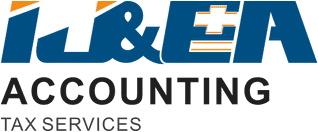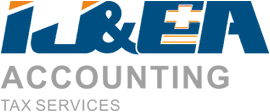Running a restaurant business is one thing and growing with a smooth flow is another. Unfortunately, you may be running a restaurant and, at the same time, be unaware of the complexities of restaurant accounting that hinder your growth. Therefore, it is essential to know exactly what’s going on in your business.
While the food industry continues to grow, keeping track of your cash flow, profits, and expenditures have become indispensable. As a result, understanding accounting is one of the steppingstones to your success in the restaurant business.
Being a customer-centric service, we have created this restaurant accounting guide for you. We provide the best restaurant accounting services and the best advice that contributes to your success as a businessperson. This is why the experts at IJ&EA have created this guide for you about everything you need to know regarding restaurant business accounting.
An Overview of Restaurant Accounting
Restaurant accounting might seem easy to someone sitting at the table and ordering food. However, the objective complexity is only known by those who manage it. It includes keeping an eye on details ensuring that the inventory is sufficient and expenditures are not out of hand. As a result, the job requires immaculate accounting expertise, from managing the narrowest boundaries to being fair in profits.
What Are Some Of The Challenges for Restaurant Cashflow?
Restaurant accounting brings various insurmountable challenges. When faced with these, you must be street-smart to deal with expected complexities. So let us see what challenges are awaiting you in this business.
Managing Restaurant Cashflow
Your business is undoubtedly doomed if you have no idea where your investments are going and where the cash comes from. Therefore, money in and cash out needs to be carefully evaluated. Unfortunately, most businesses suffer because they cannot keep track of their cash flow. As a result, even if they are profitable, they may not necessarily have enough cash to fund their day-to-day expenses, leading to a lot of trouble.
Expenditure and Costs
Unlike so many other industries, restaurant businesses require even careful and more competent management of expenditure and costs. Your restaurant has several daily expenses along with staff payroll and inventory management. High costs and additional fees might get you in trouble without adequate expertise.
Inventory
What essential quality makes your restaurant the most popular place for people? First, of course, it is fresh and delicious food.
To acquire that, the inventory management must be immaculate. However, it becomes quite a hassle for most small restaurants if they are not familiar with basic accounting skills.
Now that you are aware of the most frequent challenges, let us look at a few strategies that you can opt for to ensure that your restaurant keeps growing.
5 Strategies for Restaurant Accounting Tips
1. Have Financial Data Up To Date
Maintaining an up to date financial history is the foundational element for running a successful business in the food industry. When you have an updated record at hand, you always know the cash flow and can devise planning accordingly.
Subsequently, bookkeeping, as well as management of cash flow, becomes more manageable. Consider using a cloud software program if you are using a traditional bookkeeping system. A lot of applications available that make the accounting experience relatively hassle-free.
Besides, what happens when you or your advisor begins to analyse your cash flow? Again, an efficient record-keeping system helps you get through the analysis process quickly and effectively.
2. Create A Realistic Cash Flow Budget
Be Money-Efficient
Driving sales and watching your expenses is crucial in the restaurant industry. While you may have a considerable amount of cash inflow in credit card payments, physical money is always involved in this industry. This can easily keep track of the influx and how it needs to be spent.
Don’t Underestimate the P & L Statement
Typically, a profit and loss statement (P & L) is maintained by restaurants. This includes the inflow of cash and the outflow along with their sources. Based on your P & L statement, you can make plans for your expenses and cut costs in several less essential areas.
Cut Down On Unnecessities, Not Necessities
You need to ensure that all the essential items are sufficient before cutting the cost. For instance, food, tissues, beverages, and other items to be served must not be included in this list. However, other things such as marketing and rent money can be negotiable. Therefore, a critical approach with intelligent analysis and carefully devised realistic projection of your cash flow is essential in determining the success of your business.
3. Identify Potential Cash Shortfall
The growth of a business means increased costs. However, that does not mean the other way around as well. Sometimes, increased cash shortfall is due to discrepancies in your cash flow projection or inventory management.
Keep your record at hand and analyse any potential shortages early. Make sure that your strategies are clear and your budget is without ambiguities. A full-fledged budget planning session for each month can also help you identify such shortfalls.
4. Identify Possible Solutions
With a balanced cash flow budget and an up to date record, you should be able to identify any shortfall early. However, be watchful of your inventory cost and take notice of any unusual increase.
Once you have identified the shortage, there are several ways to handle the problem, such as:
Collecting debts
Collect outstanding debts immediately and invest the money in your business.
Bring up Sales
You may introduce new packages or throw a themed party to increase sales. Moreover, joining delivery services like Uber Eats and shifting your advertisement campaign to online mediums are practical.
Reducing Debts
You can negotiate the payment terms with suppliers, ask for a rent reduction from your landlord and request remission of any late penalties based on mutual benefits.
Selling non-essential assets
Look for things you may sell to grab some cash for investment purposes.
Assistance From Government
Australian government offers grants, and looking for such opportunities may help you get aid from official authorities.
Purchases and Stocks
You may negotiate better payment terms with inventory suppliers. Besides, being more careful with investments can be a huge plus in such circumstances.
However, you should be able to identify such shortfalls early to avoid liquidity.
5. Document And Review
No business can be run without adequate documentation and careful planning. Hence, your restaurant accounting has to be in black and white. Keep reviewing the documents frequently and look for necessary changes. Amendments at the right moment can save you from significant losses.
Why Choose Professionals At IJ&EA?
While most restaurant owners specialise in recipes, not all of them have basic-intermediate accounting skills. In addition, with running a restaurant and managing the operations, expecting them to have accounting skills is simply unfair.
We at IJ&EA offer professional bar and restaurant accounting services to restaurant owners in Queensland, Australia. We are a one-stop solution for all your accounting needs, from bookkeeping to cash flow management.
Simply call us at (07) 3540 6998 or visit our website by contacting us..












